
Lovecraft's Legacy
Horror Stories, Race, and Reclamation
HIST 6694
Howard Phillips Lovecraft
Howard Phillips Lovecraft was a dark visionary, a man of great talent and greater hatred. His works include groundbreaking ideas such as gods who are unaware of the impact they have on Humanity, juxtaposed with blatantly racist descriptions of Black and immigrant bodies. This project will briefly walk through a sampling of some of Lovecraft's works, his letters, and how his legacy not only continues to impact fiction today, but in the 21st century, is being reclaimed and redefined by the very groups Lovecraft hated.
Timeline
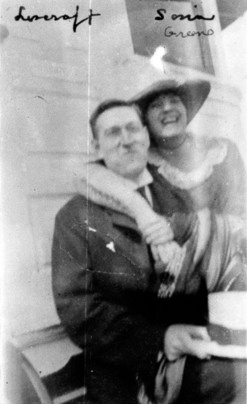
Lovecraft and his future wife, Sonia. July 5th, 1921
August 20th, 1890: Born, Providence Rhode Island.
October 1921: Herbert West - Reanimator.
Lovecraft began writing the six part serial (published in various parts over multiple issues of a magazine) "Herbert West - Renanimator" in October 1921, and finished the last installment in June 1922. The story featured mad science, canniablistic corpses, but also comparisons of a Black boxer to a gorilla.
March 3rd, 1924: Marries Sonia Green, moves to New York City.
Lovecraft had been courting Sonia Green, a fellow amateur writer, for several years, and somewhat hurriedly married her and moved to New York; his aunts -his sole surviving family after his mother's death in 1921- didn't learn of this until they received a letter from New York!
Sonia would later leave for a job in Cleveland in early 1925, leaving Lovecraft alone in New York.
August 1925: The Horror at Red Hook
Lovecraft was disgusted and repelled by the cosmopoliton atmosphere of New York, particularly the neighborhood of Red Hook he had been forced to move in. In August, he wrote an infamous story, "The Horror At Red Hook" depicting immigrants as demon-worshipping cultists.
Timeline
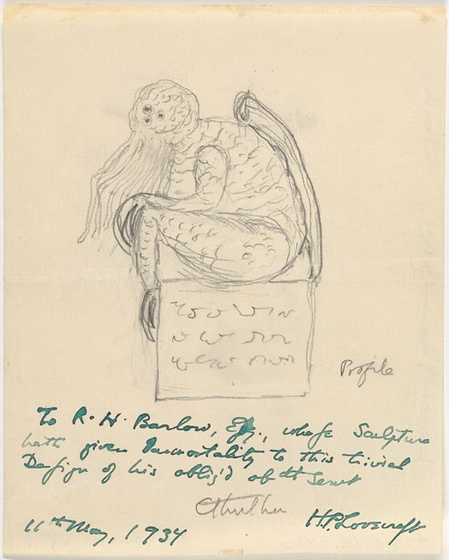
A 1934 sketch Lovecraft made of Cthulhu
April 1926: Returns to Providence
At the invitiation of his aunts, Lovecraft returns to Providence in April 1926, and took up residence in a building he shared with his aunts. Aside from brief trips to and from places such as New Orleans, Florida, and Quebec, he remained in Providence until his death. Sonia would later send divorce papers a few years later, though Lovecraft never actually signed them, so they techniclly remained married until his death.
Feburary 1928: The Call of Cthulhu
One of Lovecraft's most famous works,The Call of Cthulhu, was written in 1926, but was not published until Feburary 1928 in Weird Tales. Featuring an underwater monster who is "not dead but dreaming", sleepwalking artists, and a mysterious island appearing in the middle of the Pacific, The Call of Cthulhu is a classic work of cosmic horror.
February 1931: At The Mountains of Madness
In February 1931, Lovecraft wrote one of his most famous stories, At The Mountains of Madness, following a doomed expedition to the Antarctic. Alien fossils are revealed to be still-living creatures in hibernation, and terror ensues.
Timeline
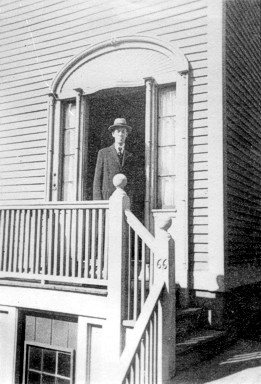
1935, March 2 – Lovecraft in the doorway of his home at 66 College Street, Providence.
January 1932: The Dreams In The Witch House
In January 1932, Lovecraft wrote The Dreams In The Witch House. A story of mathematics, witchcraft, and ritual sacrifice, Dreams is interesting and unusual in that an immigrant charecter proves vital to defeating the witch. This victory is short lived, but it signals a broader shift in Lovecraft's thinking about immigrants.
November 1935 - The Haunter of The Dark
In November 1935, Lovecraft wrote his last original work, "The Haunter of the Dark". It follows a man beccoming obsessed with a local Providence church, which houses a figure summoned by the dark and banished by the light. Gradually posessed by the Haunter, Robert Blake grows increasingly panicked until the Haunter breaks out of the church during a thunderstorm. Just as it prepares to fully possess or kill Blake, lightning strikes it, killing both Blake and the Haunter. This is Lovecraft's last original story, one of nearly 107 he wrote over the course of his lifetime.
March 15th, 1937: Lovecraft dies of intestinal cancer at 46
Lovecraft's stories
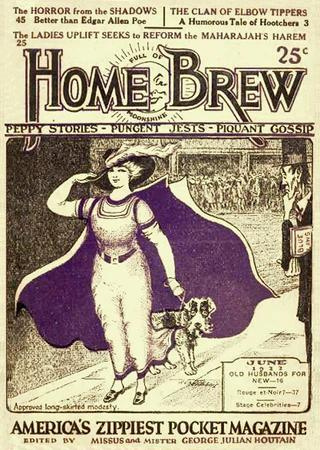
Herbert West was a six-part story told in installments. This June 1922 edition of Home Brew advertises part five, The Horror From The Shadows, as being "Better than Edgar Allan Poe"
Herbert West - Reanimator
Herbert West - Reanimator is a story of mad science and zombies, following Dr. Herbert West as he finishes medical school, opens a private practice, serves in the First World War, and opens another practice, renaiminating the dead with his reagent all along the way. West is a classic mad scientist, a man who will go to any length -including murder, to achieve his ends.
The story, told in six installments (From The Dark, The Plague-Demon, Six Shots by Moonlight, The Scream of The Dead, The Horror From The Shadows, and The Tomb-Legions) in Home Brew magazine, follows West and his assistant, focusing on five reanimations and a finale, where West's experiments, led by an intelligent zombie, track him down and tear him to pieces.
Herbert West is one of Lovecraft's pulpiest, most action-packed stoiries, yet is still clearly racist. One of the subjects being experimented on was an African-American boxer "The Harlem Smoke", Buck Robinson. Robinson is dehumanized and compared to a gorilla.
"He was a loathsome, gorilla-like thing, with abnormally long arms which I could not help calling fore legs, and a face that conjured up thoughts of unspeakable Congo secrets and tom-tom poundings under an eerie moon. The body must have looked even worse in life—but the world holds many ugly things."
Lovecraft's stories

The original illustration of The Horror At Red Hook, in Weird Tales January 1922.
The Horror At Red Hook
The Horror At Red Hook was written when Lovecraft was living alone in New York, having been forced by financial necessity to move to the Red Hook neighborhood of Brooklyn. The story follows Thomas Malone, an Irish police officer, investigating a man by the name of Thomas Suydam, who is connected to a series of child kidnappings. Sudyam imports illegal immigrants to America, and when he is mysteriously killed on his way to a honeymoon, his corpse is recovered by immigrant cultists. His corpse is reanimanted through child sacrifice and 'married' to a demoness, only for things to go awry at the last minute.
Red Hook is an extremely xenophobic story. Immigrants are described by their physical features, none of which are flattering. Physical features are cited as proof of their inhumanity, which Lovecraft questionsin the story.
Immigrants are described as having "swarthy, sin-pitted faces", "slant-eyes", and one line questions their humanity as they exit a ship; "The pockets of these men – if men they were – bulged damnably when they left the ship."
The Dreams In The Witch House
Lovecraft's Stories
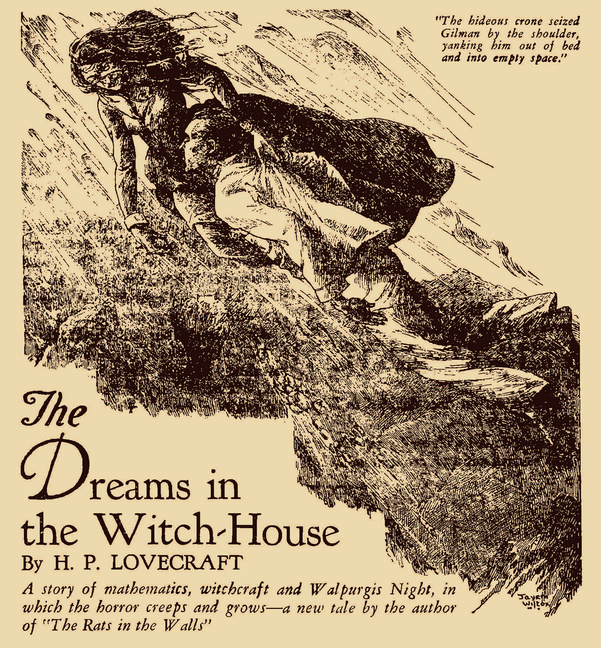
The original illustration for The Dreams In The Witch House, in Weird Tales July 1933
One of Lovecraft's last stories, The Dreams In The Witch House follows Walter Gilman, an overeager mathematics student at Miskatonic University in Arkham, Massachusetts (both created by LLovecraft for his stories). Gilman resides in the same room that Keziah Mason a 17th century witch used for her spells, and is convinced that Keziah used mathematics and magic together. Walter has increasingly disturbing dreams of the witch and her familiar, and this culminates on the night of April 30th, where he is summoned to help Keziah sacrifice a child. Strangling her with a crucifix chain provided by an immigrant, Walter kills Keziah, only to die when her familiar, Brown Jenkin eats his heart out from the inside out.
The Dreams in The Witch House is unique in that an immigrant charecter plays an important and beneficial role. Joe Mazurewicz, a Polish immigrant and devout Catholic, repeatedly warns Gilman to move out of his room, and provides him the crucifix that is ulimtately used to kill Keziah Mason.
Mazurewicz was waiting for him at the door, and seemed both anxious and reluctant to whisper some fresh bit of superstition. ..it would be better for the gentleman to take another room and get a crucifix from some good priest like Father Iwanicki
Howard Phillips Lovecraft to Reinhart Kleiner, January 18th, 1919
This letterclearly lays out Lovecraft's thoughts on racial matters in 4 points, 2 of which I have quoted below. Lovecraft explains that he believes that African-Americans are biologically inferior to whites, and no matter how talented some of them may be, a strict color line is necessary.
Lovecraft's Letters on Race
Lovecraft's letters offer further insight into his personal views. Four letters have been selected to demonstrate some of his views and how they did (and did not) change over time. In Lovecraft's earlier letters, he defended segregation, argueing that African-Americans were fundamentally inferior to whites. This view did not change over time, and just a few years before his death, he continued to argue that Blacks were biologically distinct from whites.
"1. Certainly [emphasis his] the negro is vastly the biological inferior to the Caucasian...
4. ...the much-abused “color line” is a self-protective measure by the white American people to keep the blood of their descendants pure, ... In spite of all the Booker Washingtons & Dunbars we can see the negro as a whole has never made progress or founded any culture"
Howard Phillips Lovecraft to Robert E Howard, Nov. 7, 1932
In this 1932 letter to Robert E Howard, Lovecraft makes it clear that he believes people of African descent are biologically inferior to whites
"Taking mankind as a whole, there are just two race-stocks whose biological variations in the direction of the primitive and whose consistent lack of spontaneous intellectual and cultural growth unmistakably stamp them as inferior. These are the australoid, including Australian blackfellows ... and the negro,"
Howard Phillips Lovecraft to Lillian Clarke, January 11th, 1926
Lovecraft's Letters on Immigrants
In this 1926 letter to his aunt Lillian, Lovecraft characterizes immigrants as being inhuman, dirty, and as being so horrible that white men must kill them, flee them, or literally go insane.
Lovecraft's letters offer further insight into his personal views. Four letters have been selected to demonstrate some of his views and they did (and did not) change over time. Unlike his views on race, his views on immigrants changed over time. In his earlier works, he described them in subhuman terms, regarding them as blatently inferior to whites. However, by the early 1930s, he regarded the issue as largely being one of how immigrants can assimilate American culture, with race playing only a minor factor.
"New York may yet evolve into another colour-line, for there the problem assumes it’s most hideous form as loathsome Asiatic hordes trail their dirty carcasses over streets where white men once moved, & air their odious presence & twisted visages & stunted forms til we shall be driven either to murder them or emigrate ourselves, or be carried shrieking to the madhouse"
Howard Phillips Lovecraft to James F. Morton, June 12th, 1933
In this 1933 letter toJames F Morton, Lovecraft describes many Jews as being of "superior stock", and claims the primary issue is not one of race, but of different values. While hardly embracing them, this letter is much less virulent than his 1933 letter.
"It [the Jewish “problem”] is only slightly race – half the Jews in existence are of very superior stock, as their ability to understand our culture shews… The real impassable barrier is culture. Our whole system of values differs utterly and irreconcilably from the Jewish system…"
Works Influenced by Lovecraft
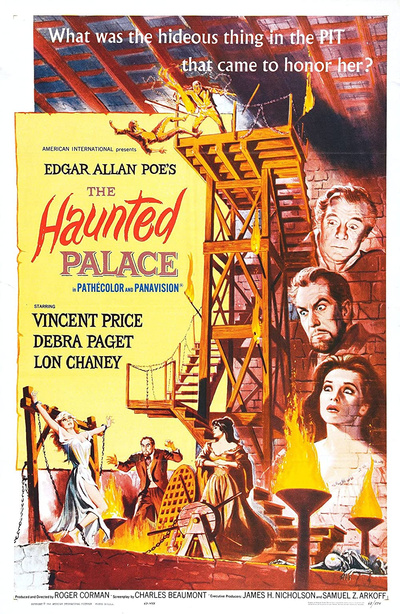
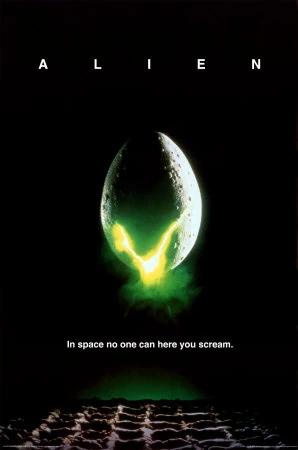
The Haunted Palace by Roger Corman
In 1965, director Roger Corman adapted Lovecraft's only novel, The Case of Charles Dexter Ward into The Haunted Palace, and included it in a cycle of Edgar Allan Poe adaptations.
Alien by Ridley Scott
Ridley Scott's 1979 horror film Alien was inspired by Lovecraft's tale of Antarctic terror, At The Mountains of Madness.
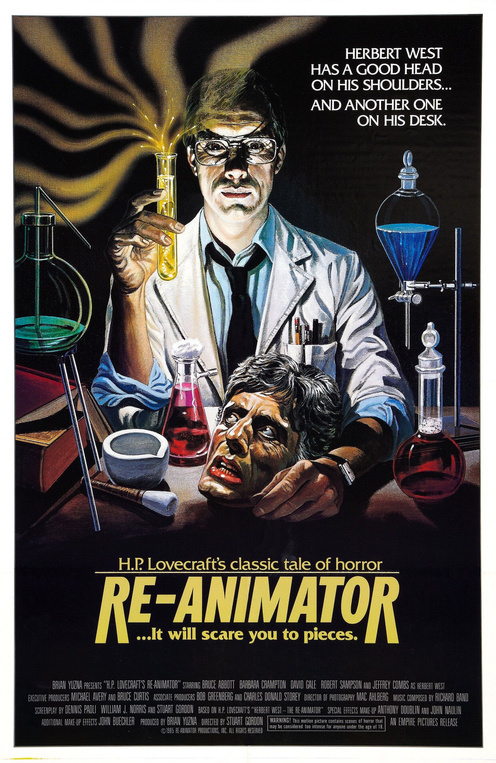
Re-Animator by Stuart Gordon
In 1985, Herbert West - Reanimator was loosely adapted by Stuart Gordon. The film, set in the modern era and featuring lots of dark humor, earned a cult following.
Works Influenced by Lovecraft
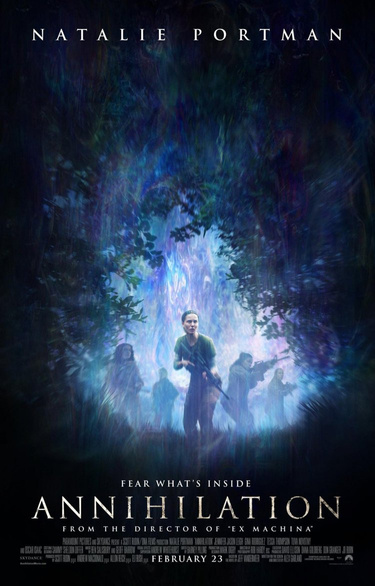
The Dreams In The Witch House Rock Opera
In 2013, Mike Dalager adapted The Dreams In The Witch House into a rock opera, telling the story through a 16 song concept album, emphasizing the religious terror of the story. This 1930s horror film inspired music video for one of the tracks was produced in 2014.
Annihilation by Alex Garland
The 2018 horror film, Annihilation, was inspired by Lovecraft, featuring a alien bubble where plants and animals are warped into bizarre new forms.

The Color out of Space by Richard Stanley
Lovecraft's 1927 story, The Colour out of Space, featuring a life-draining meteorite, was adapted into a 2019 movie by Richard Stanley.
Redefining Lovecraft: Lovecraft Country
Based on the Matt Ruff novel of the same name, the 2020 HBO series Lovecraft Country upends and subverts Lovecraftian tropes and expectations in big ways. In Lovecraft's stories, Black people are portrayed as criminals, cultists, and other negative depictions. Lovecraft Country subverts these depictions in several ways. Following a Black family traveling across 1950s Massachusetts, the show tackles racism directly, and does not hesitate to show the trauma caused by Jim Crow and the history of racist atrocities, such as a time-travel episode featuring the Tulsa Massacre.
The characters of the show defy Lovecraftian tropes by standing up for their rights and defying a cult - as opposed to being part of it like in Lovecraft's works - and fighting enforcers of racist power structures such as racist police officers and, in another time-travel segment, protecting Black women from Confederate soldiers.
Lovecraft Country features Black empowerment, in a very literal way. The protagonists make use of magic to fight off their foes, and in the finale, a character not only defeats the evil descendant of a slave owner, but then proceeds to make it so that white people can never use magic again, giving African-Americans an advantage over white oppressors.
Redefining Lovecraft: The Dreams In The Witch House
As part of the 2022 Netflix anthology series, Guillermo Del Toro's Cabinet of Curiosities, two Lovecraft stories were adapted; Pickman's Model and The Dreams In The Witch House. The Dreams In The Witch House adaptation was directed by Catherine Hardwicke, and was a loose adaptation (there is no Miskatonic, no Arkham, no math, and Walter is searching for a missing sister). However, loose as it may be, it's nonetheless an adaptation of Lovecraft, one which gives important roles to Black and Indigenous characters in this version of the story,
To make contact with his missing sisters soul, trapped in a limbo-like forest, Walter Gilman replies on Indigenous charecters who provide him with the drugs necessary to reach this forest. A pair of Black women play important roles; a prophetic artist named Mariana foretells Walter's death, while Sister Lucretia, a nun, tries to fight off Keziah. Walter's roommate, Frank Elwood, is a Black man as well. The story is made more representative of American diversity than Lovecraft's original story ever was.
Conclusion
H P Lovecraft 's works have inspired countless other artists over the years, and in spite of Lovecraft's views, continue to be popular today. Lovecraft was a racist who believed that African Americans were fundamentally inferior to whites, and it is important to recognize that, especially as his works enjoy more visibility than ever; in this case, separating the art from the artist is not so easy. However, some recent works have tried to give the representation Lovecraft's stories never had, and to defy his racist views by employing Black protagonists and subverting his ideas.
Works Cited
Lovecraft, Howard Phillips. Letters to Family and Family Friends: 1926-1936. Volume 2 of 2. Edited by David E Schultz and S. T Joshi. New York: Hippocampus Press, 2020.
Lovecraft, Howard Phillips. Letters to James F. Morton. Edited by David E Schultz and S. T Joshi. New York: Hippocampus Press, 2011.
Lovecraft, Howard Phillips. A Means to Freedom: The Letters of H.P Lovecraft and Robert E. Howard 1930-1932. Volume 1 of 2. Edited by Rusty Burke, David E Schultz and S. T Joshi. New York: Hippocampus Press, 2009.
Lovecraft, Howard Phillips. Letters to Rheinhart Kleiner and Others. Edited by David E Schultz and S. T Joshi. New York: Hippocampus Press, 2020.
Lovecraft, Howard Phillips, and Leslie S. Klinger. The New Annotated H.P. Lovecraft. New York: Liveright Publishing Corporation, 2014.